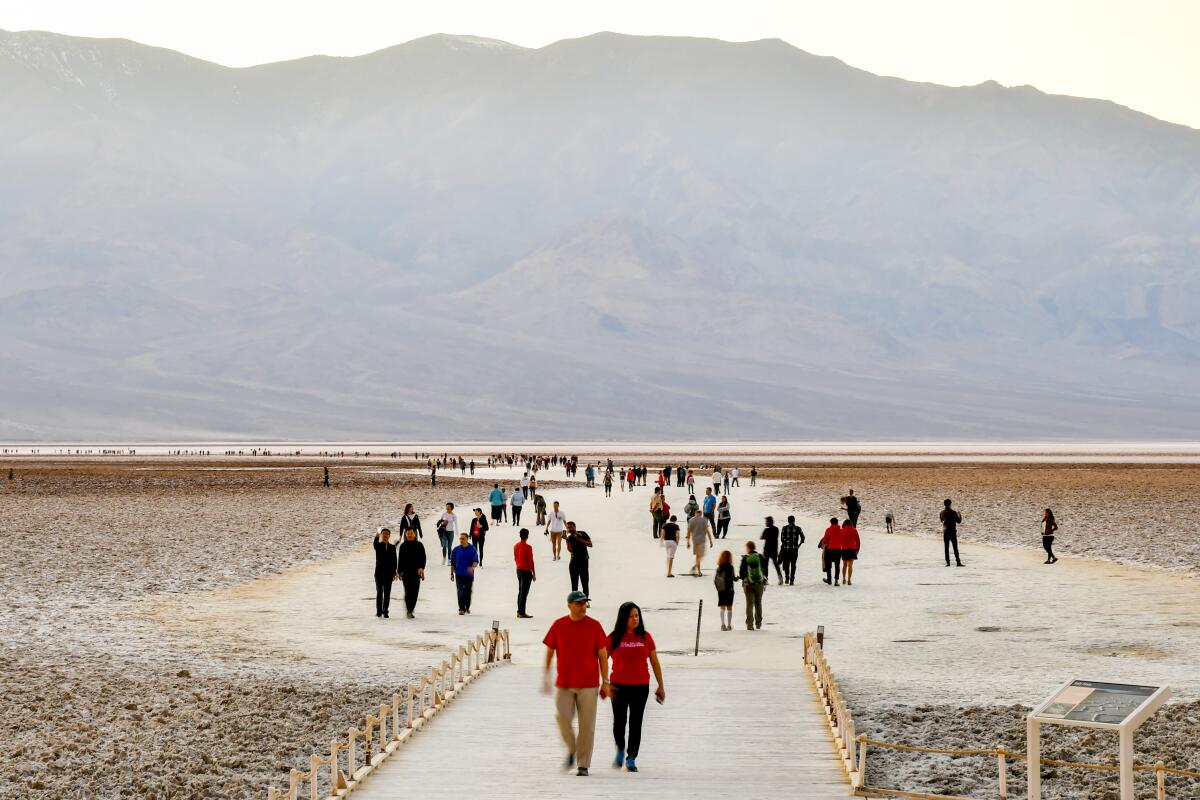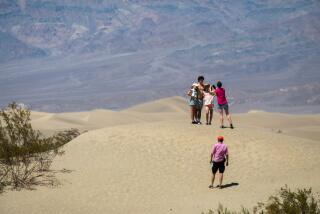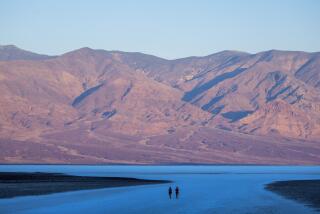Death Valley National Park to reopen Sunday

- Share via
Death Valley National Park, which was ravaged by summer storms that washed out roads and trails, will partially reopen Sunday and allow visitors to see a large temporary lake.
The popular desert park and State Route 190 have been fully closed since Aug. 20 because of extensive flash flood damage caused by the remnants of Hurricane Hilary.
It was the longest closure in Death Valley National Park’s history, Supt. Mike Reynolds said.
Travelers will regain access to many popular park spots including the Mesquite Flat Sand Dunes, Zabriskie Point, Golden Canyon and the salt flats at Badwater.
Badwater Basin has a temporary lake that is several miles long, Reynolds said. The lake is only a few inches deep and may dry up within a few weeks.
“It’s pretty rare to see a lake in Death Valley,” Reynolds said in a statement. “This is a really special time.”
Visitors will be able to enter the park on State Route 190 from the west via Lone Pine or from the east via Death Valley Junction. All other park entrances will remain closed.
The roads that are being opened are not yet fully repaired, the National Park Service said. Collapsed road segments have been filled in with gravel and travelers should expect loose gravel on roads, lowered speed limits and traffic delays.
State Route 190 will have one-hour delays because of an extensive section of one-lane traffic control between Panamint Springs and Father Crowley Vista. Several other places will have delays of up to 20 minutes for traffic control.
The open roads will be Badwater Road from State Route 190 to Badwater Basin, Dantes View Road, Twenty Mule Team Canyon Road, Artists Drive, Natural Bridge Road, Mustard Canyon and Mosaic Canyon Road. All other roads will remain closed.
Lodging, food, and fuel will be available at Panamint Springs Resort, Stovepipe Wells Village and the Oasis at Death Valley. Many park service campgrounds will also be open.
After suffering damage in record summer storms of 2022, many Death Valley roads had been repaired. Then came Tropical Storm Hilary, which dropped 2.2 inches of rain on Furnace Creek, breaking a one-day rain record of 1.7 inches that had been set the year before. The park averages 2.15 inches of rain yearly.
Some unpaved backcountry routes, like Titus Canyon Road, have been destroyed altogether, park officials said. The trail to Darwin Falls has also been destroyed. Scotty’s Castle has been closed and under repair since a flood in 2015, with reopening expected no sooner than December 2025.
Times staff writer Christopher Reynolds contributed to this story.
More to Read
Sign up for Essential California
The most important California stories and recommendations in your inbox every morning.
You may occasionally receive promotional content from the Los Angeles Times.











